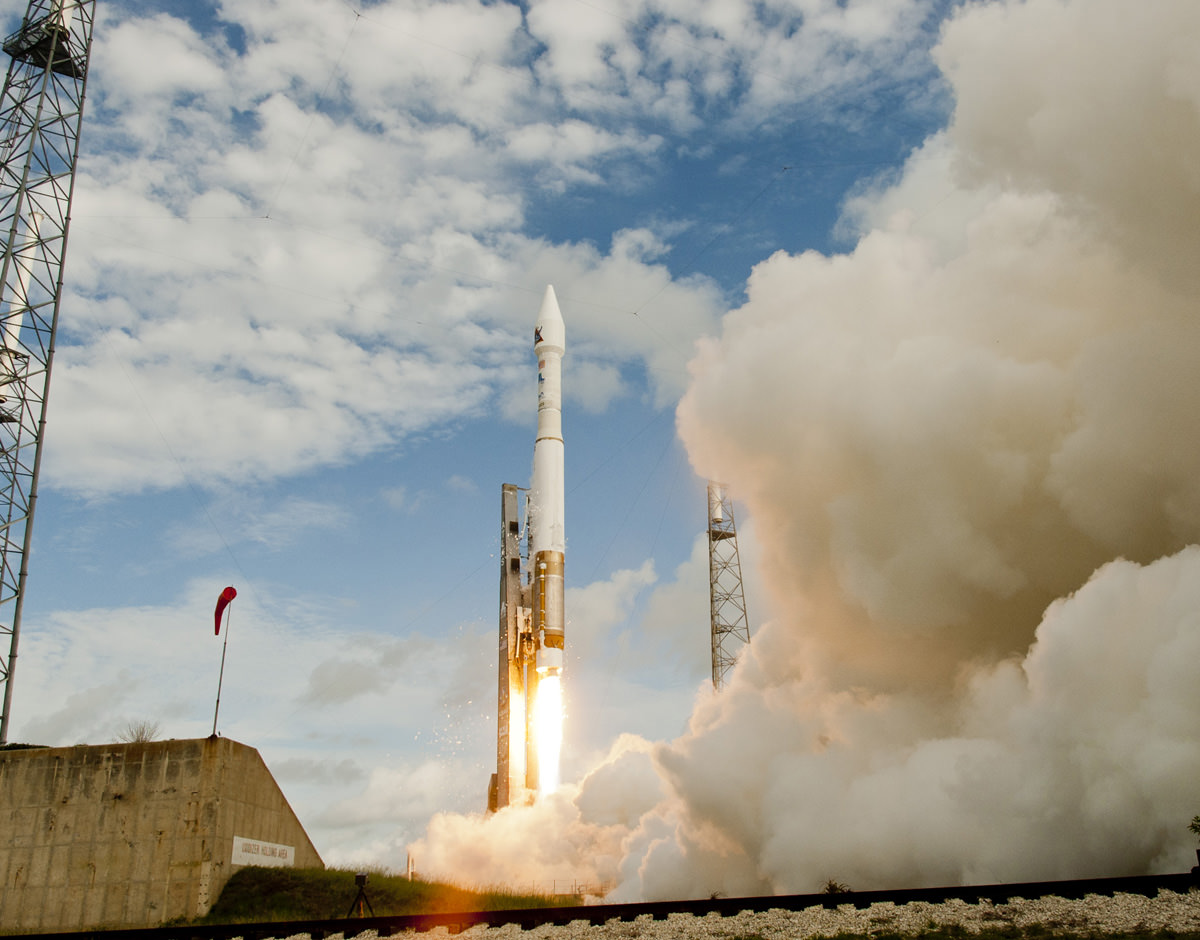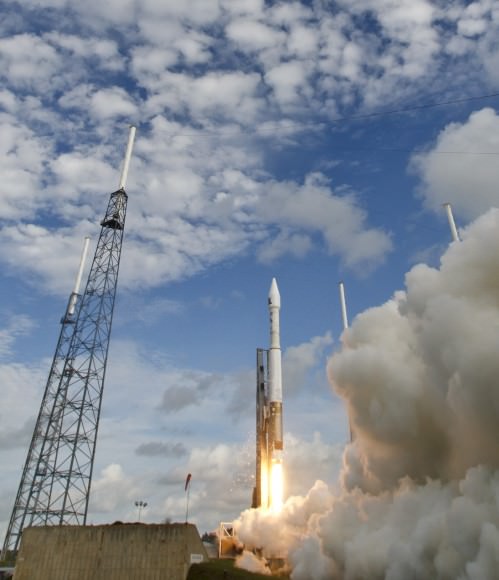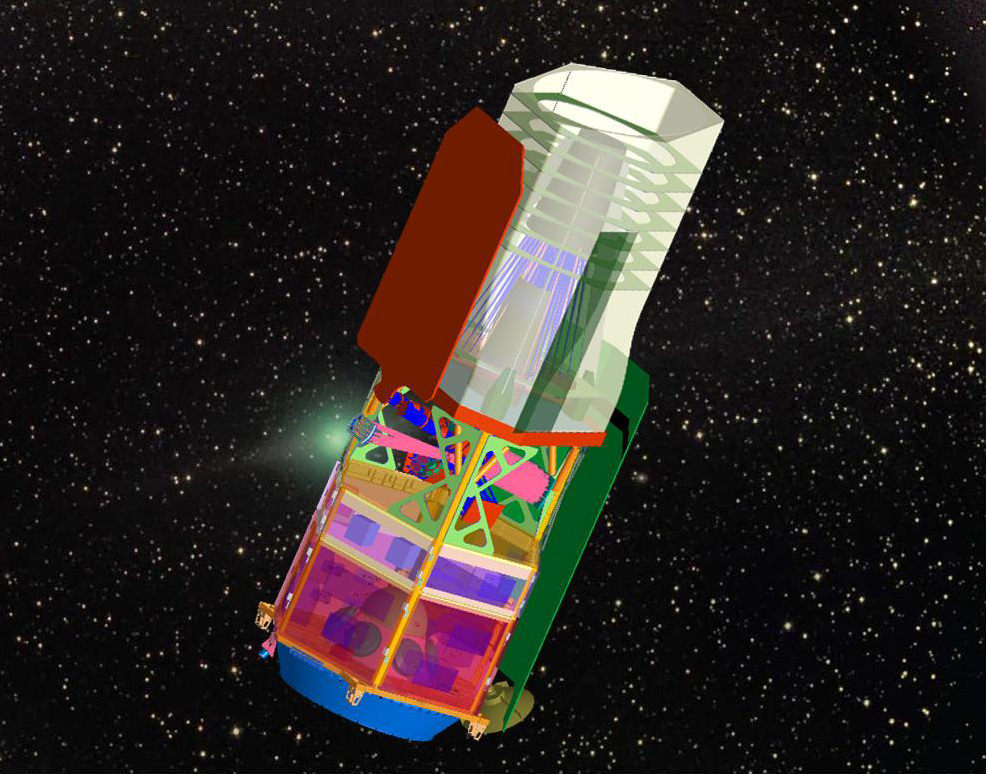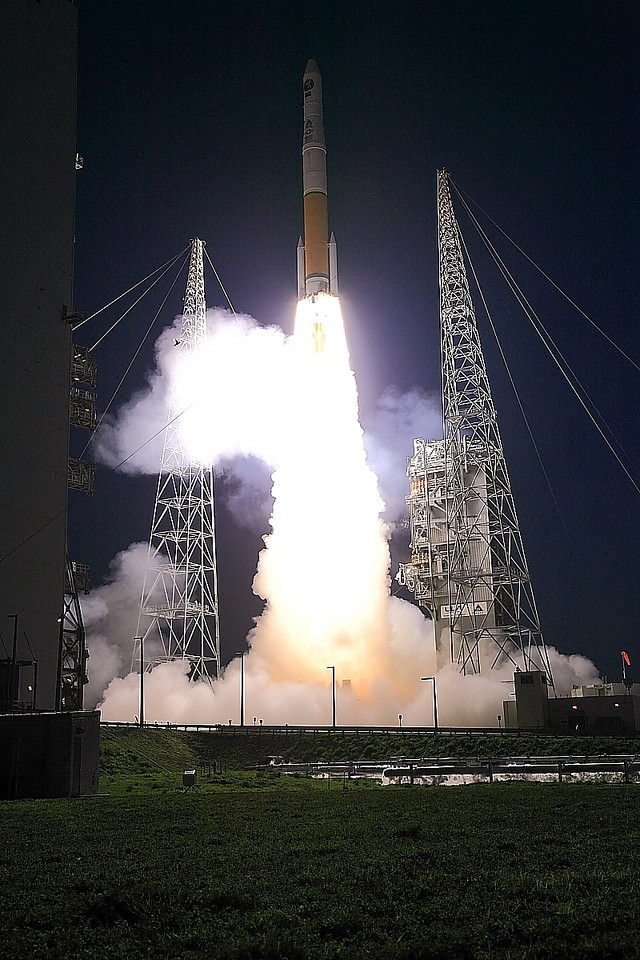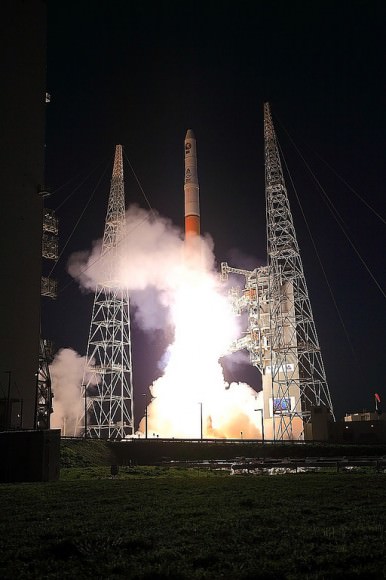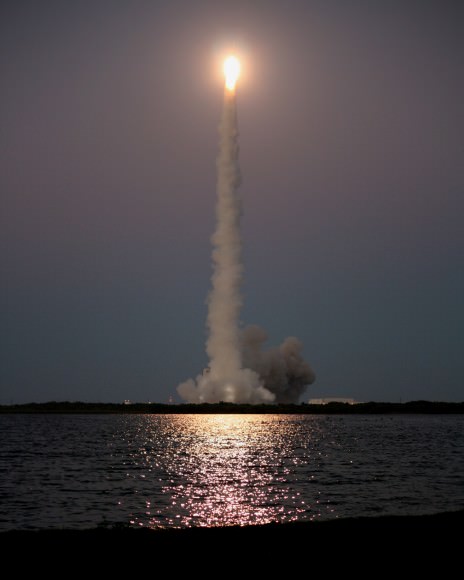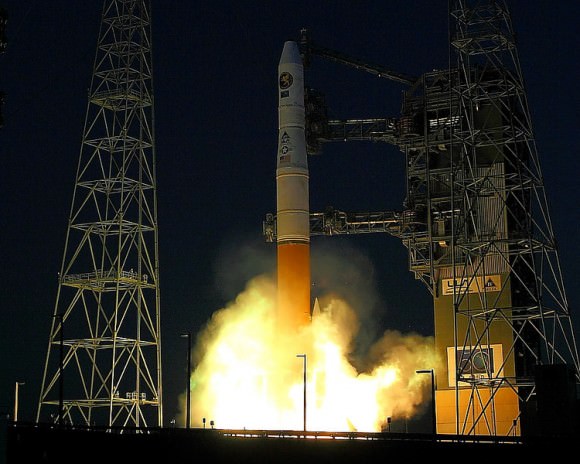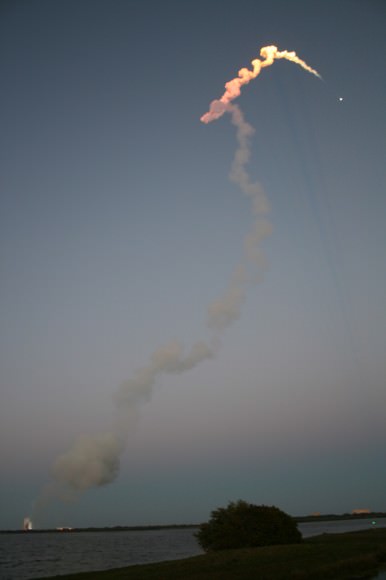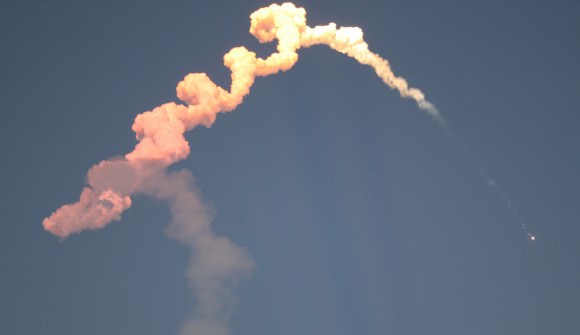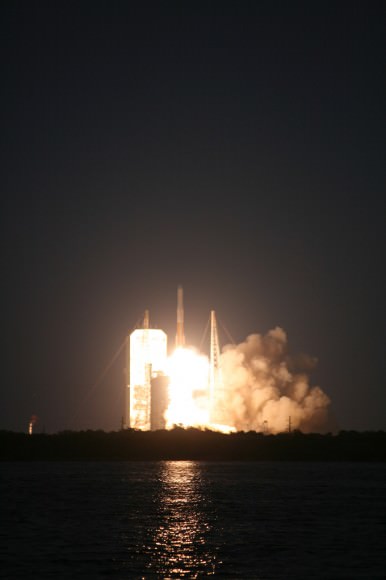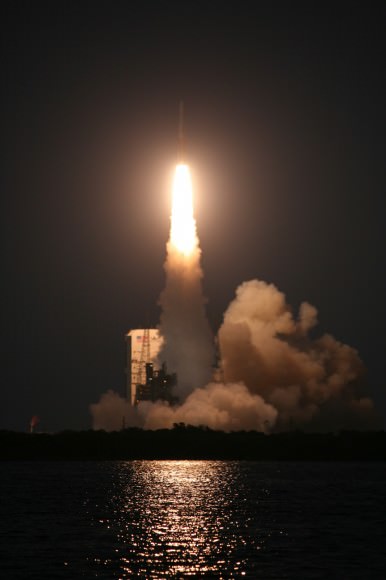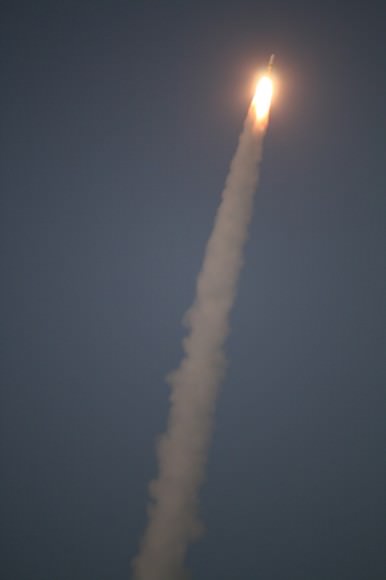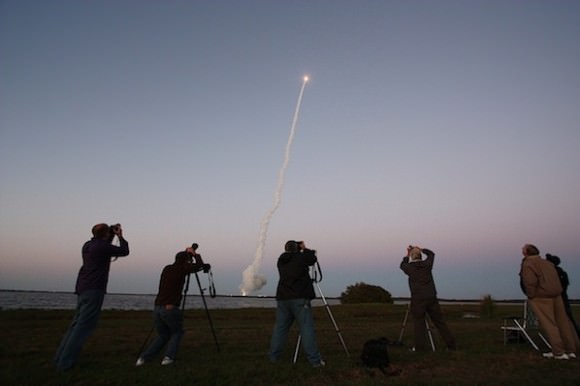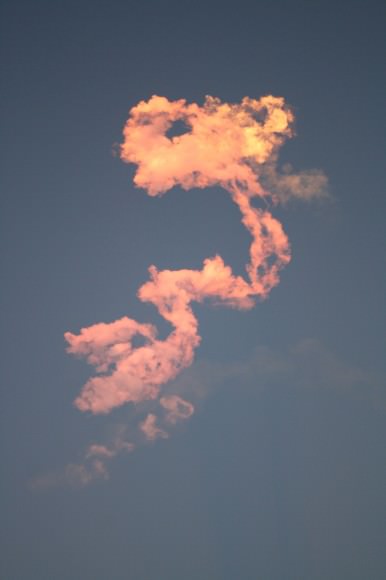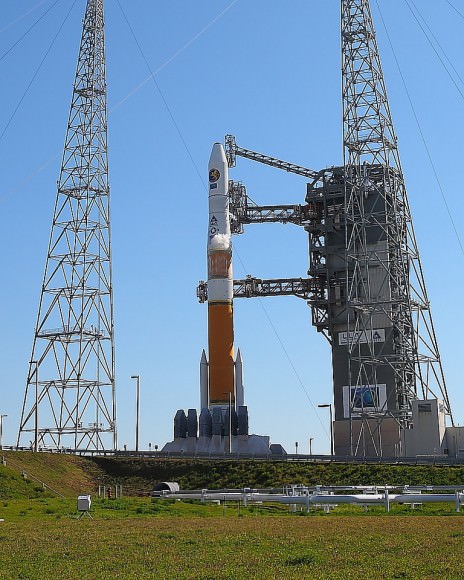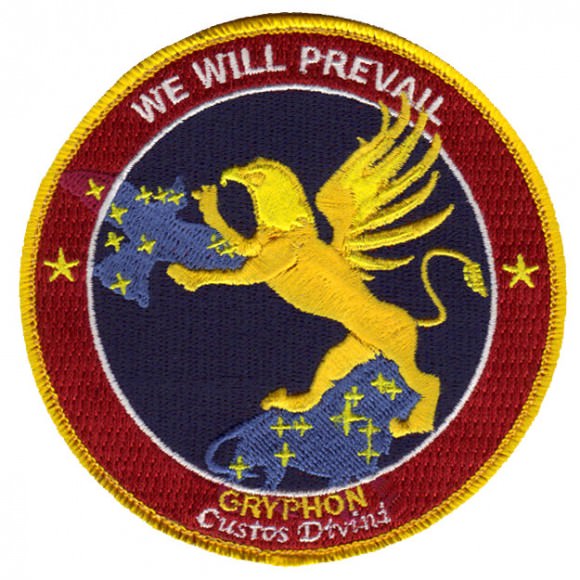Image Caption: Spy Satellite for the U.S. National Reconnaissance Office blasts off atop Atlas V rocket from Cape Canaveral, Florida at 8:28 a.m. EDT. Credit: Jeff Seibert/wired4space.com
A top secret US national security Spy satellite for the National Reconnaissance Office (NRO) roared mightily to space this morning (June 20) through picturesque layers of broken clouds an Atlas V rocket at 8:28 a.m. EDT (1228 GMT) from Space Launch Complex-41 on Cape Canaveral Air Force Station, Fla.
Basically nothing is publicly known about the specifications or mission of the vital payload, dubbed NROL-38, launched in support of America’s national defense.
The classified mission entered a total news blackout and cutoff of the live webcast some five minutes after launch when the rocket’s first stage and upper stage engine separated successfully and before the secret satellite was deployed and reached orbit.
The flight marked a key milestone as the 50th successful launch of the combined Atlas V and Delta IV booster families collectively known as the Evolved Expendable Launch Vehicle (EELV) built by United Launch Alliance (ULA). The maiden launch took place in 2002.
Image Caption: NROL-38 Spy Satellite soars to space on an Atlas V rocket from Cape Canaveral, Florida at 8:28 a.m. EDT on Jun 20, 2012. Credit: Jeff Seibert/wired4space.com
ULA was formed in 2006 as a partnership between Boeing and Lockheed Martin who were originally in competition at the start of the EELV program.
“This morning’s flawless launch is the product of many months of hard work and collaboration of government and industry teams. We hit it out of the park again as we continue to deliver superior vigilance from above for the Nation,” remarked Col James D. Fisher, Director of Office of Space Launch.
Threatening clouds and gusting winds remained within acceptable levels and did not delay the launch.
The 19 story Atlas booster first stage was powered by the RD AMROSS RD-180 engine and the Centaur upper stage was powered by a single Pratt & Whitney Rocketdyne RL10A-4 engine.
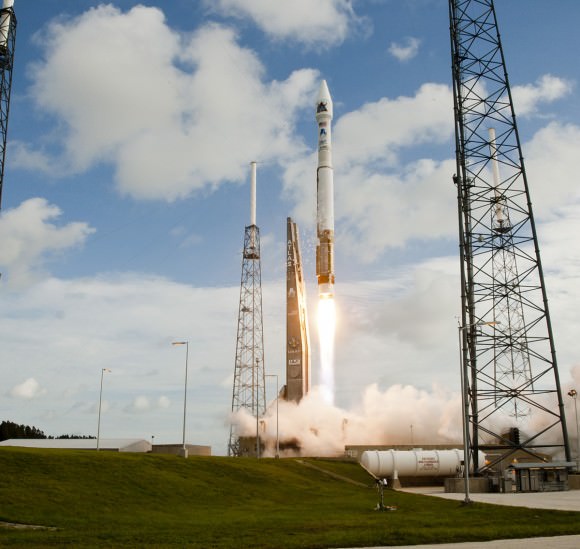
Image Caption: NROL-38 Spy Satellite liftoff on June 20, 2012 atop Atlas V rocket from Cape Canaveral, Florida. Credit: Ken Kremer/www.kenkremer.com
“Congratulations to the NRO and to all the mission partners involved in this critical national security launch,” said Jim Sponnick, ULA vice president, Mission Operations. “This launch marks an important milestone as we celebrate the 50th successful Evolved Expendable Launch Vehicle (EELV) mission, with 31 Atlas V and 19 Delta IV missions flown since August 2002.”
The NROL-38 spy satellite is the first of three critical NRO missions slated for launch by ULA over the next two months. The NRO is based in Chantilly, Va. and the U.S. Government agency responsible for designing, building, launching, and maintaining America’s intelligence satellites.
Indeed the next NRO satellite is currently scheduled for blastoff in the early morning hours of June 28 atop a Delta 4 Heavy booster rocket, now the most powerful rocket in the US arsenal following the forced retirement of NASA’s trio of Space Shuttle orbiters and which will surely put on a spectacular sky show !
The likewise classified NROL-15 mission will lift off next Thursday from Space Launch Complex-37 at Cape Canaveral.
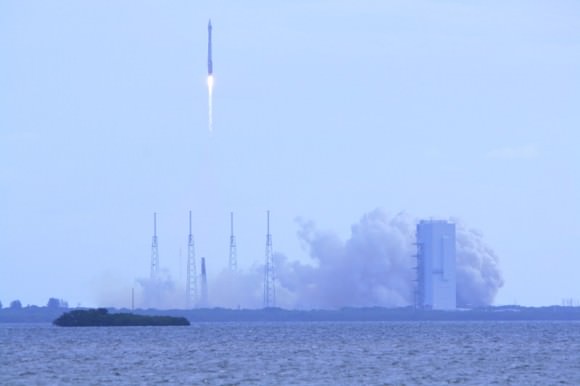
Image Caption: NROL-38 Spy Satellite liftoff on June 20, 2012 atop Atlas V rocket from Cape Canaveral, Florida. Credit: Ken Kremer
The EELV Program was developed by the United States Air Force to provide assured access to space for Department of Defense and other government payloads, achieve significant cost savings and reliably meet launch schedule targets as older booster such as the Titan were phased out.
“Twelve of the 50 EELV launches have been NRO missions and these have been vital to our overall mission of delivering on commitments critical to our national security,” said Bruce Carlson, director, National Reconnaissance Office. “I thank and congratulate ULA and the EELV program for the tremendous performance and achievement of this very impressive and noteworthy milestone.”
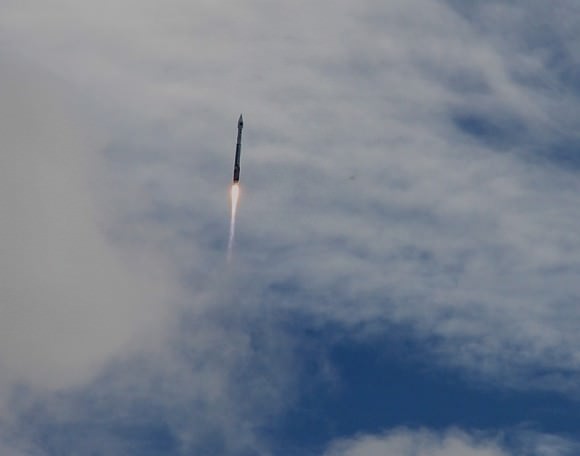
Image Caption: NROL-38 Spy Satellite atop Atlas V rocket pierces cloud layers after liftoff on June 20, 2012. Credit: Ken Kremer
ULA will be getting some competition. SpaceX Corporation – which recently dispatched the first private spacecraft (Dragon) to dock at the ISS – will compete in the bidding to launch future US national security payloads.

